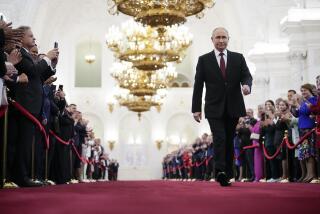There’s a museum in Russia honoring Boris Yeltsin. Team Putin doesn’t like it
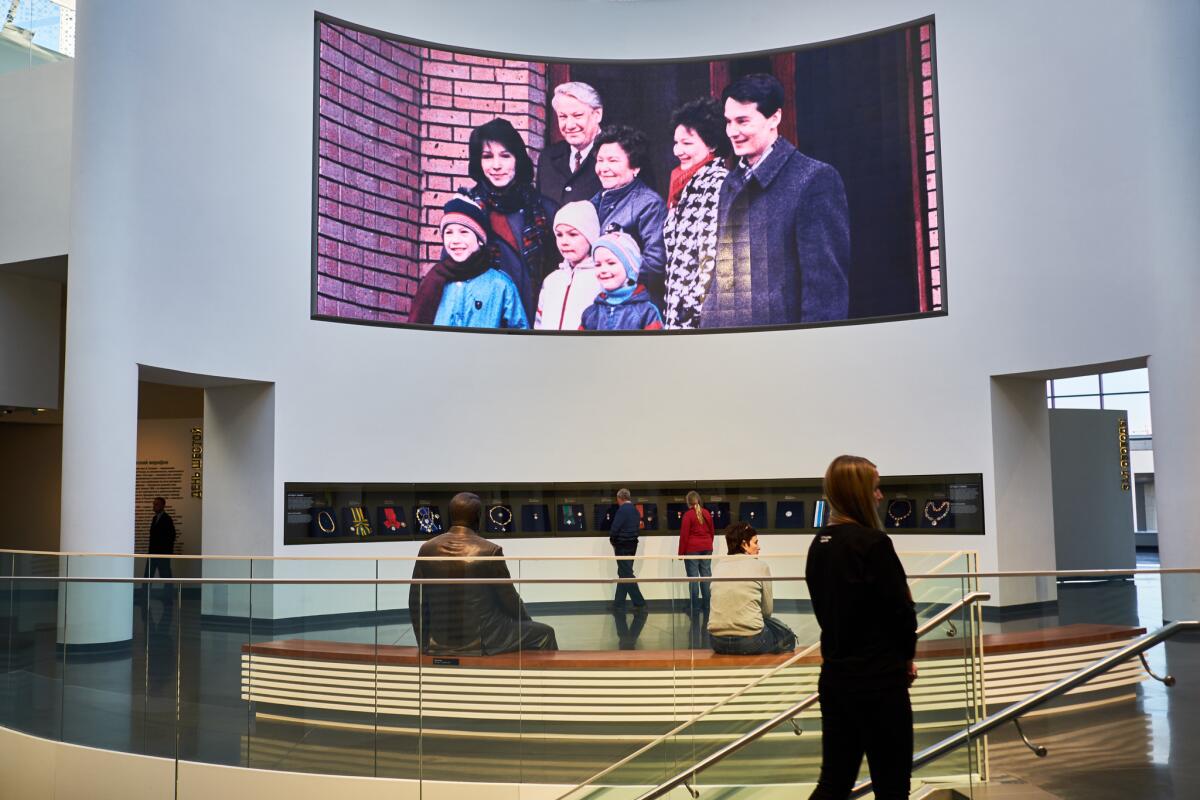
- Share via
Reporting from Yekaterinburg, Russia — Visitors to the Boris Yeltsin Museum start their tour with a small mockup of the hall where, on Oct. 21, 1987, the president of what was then the Russian Socialist Republic gave a shocking speech to the Central Committee of the Communist Party of the USSR.
Sitting in one of the original red velvet auditorium chairs, visitors listen to a recording of Yeltsin as he assails the slow pace of Soviet leader Mikhail Gorbachev’s reforms, and unabashedly criticizes the party elite. Video of Yeltsin’s expressive face and exaggerated hand gestures hint at the magnitude of the speech that, many believe, marked the beginning of the end of the Soviet Union.
Yeltsin would go on to become the first democratically elected president of an independent Russia, leading the country through the shoals of social and economic breakdown after 70 years of communism. He left a complex legacy that has been overwhelmingly rejected by his hand-picked successor, Vladimir Putin, and by the vast majority of Russians.
Since the Yeltsin Museum opened in the late president’s hometown of Yekaterinburg in November 2015, political allies and supporters of Putin have complained that its depiction of events in the 1990s were “destroying the national identity of the young” and acting as a “center of Russophobia.”
Still, the museum has soldiered on as one of Russia’s only venues discussing what Yeltsin Center staff insist is an important history lesson for young Russians, who take for granted many of the freedoms that came out of the chaotic transition from totalitarianism to democracy.
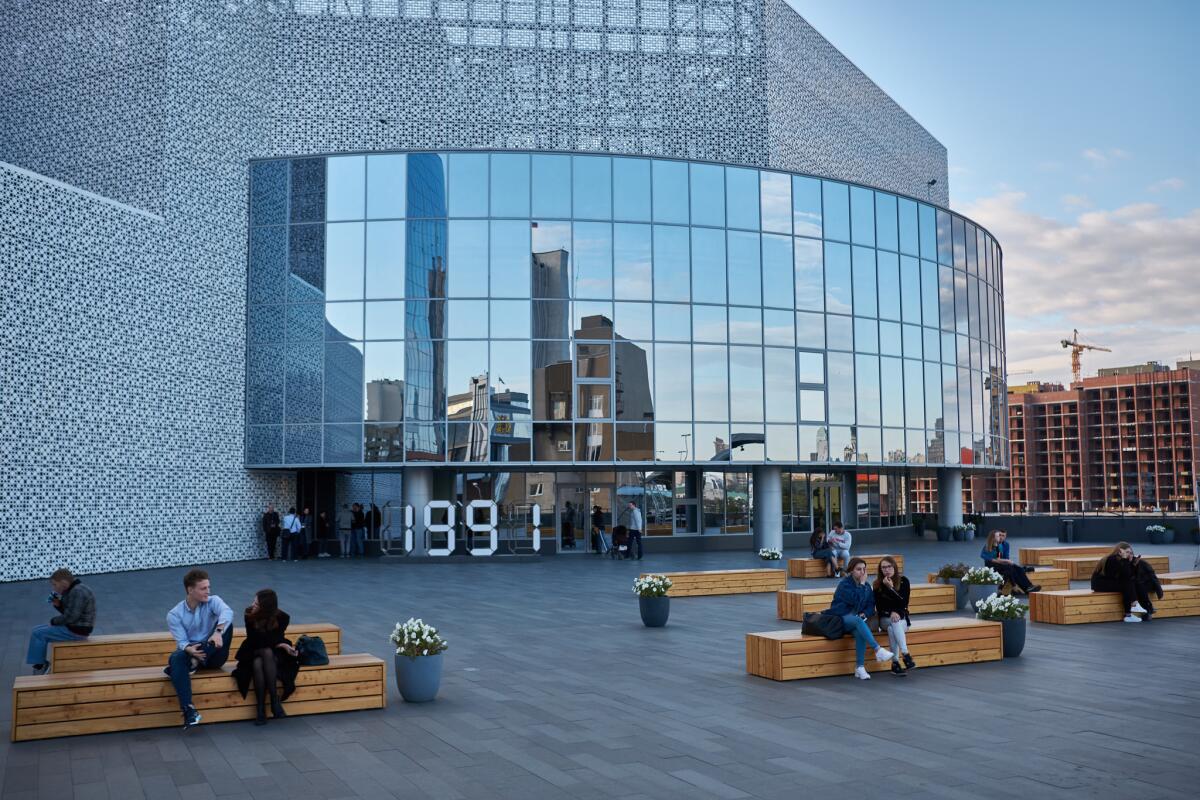
Yeltsin is widely credited with liberating Russians from the suffocating strictures of the Soviet era, championing freedom of speech, religion and political participation, and open borders. At the same time, he presided over a period of “crony capitalism,” in which the most precious assets of the Soviet state were privatized and handed out to Kremlin allies, and average Russians saw the social safety net pulled out from under them.
It was a chaotic time, and it didn’t help that the president had a well-deserved reputation for drunkenness. Russians who remember Yeltsin’s presidency often recall it with bitterness. A 2016 opinion poll conducted by the independent, Moscow-based Levada Center found that only 14% of Russians had positive feelings about Yeltsin, who had died nine years earlier, while 36% had a negative attitude.
One of the museum’s most outspoken critics is Nikita Mikhalkov, who directed a 1994 Oscar-winning film about Stalin-era repressions called “Burnt by the Sun.” A close Putin ally, Mikhalkov has said the museum glorified the Yeltsin era in a dangerously one-sided point of view.
When the museum won accolades from the European Museum Forum for its design, Mikhalkov compared the prize to receiving the Iron Cross in Nazi Germany.
The center’s head of archives, Dmitry Pushmin, is surprisingly sympathetic to some of the rancor. “The changes of the 1990s were frustrating and tough on all the people who remember them,” Pushmin said as he walked up the stairs of the museum and into a glass-domed atrium. Tourists posed for selfies sitting next to a life-sized, bronze statue of Yeltsin on a bench.
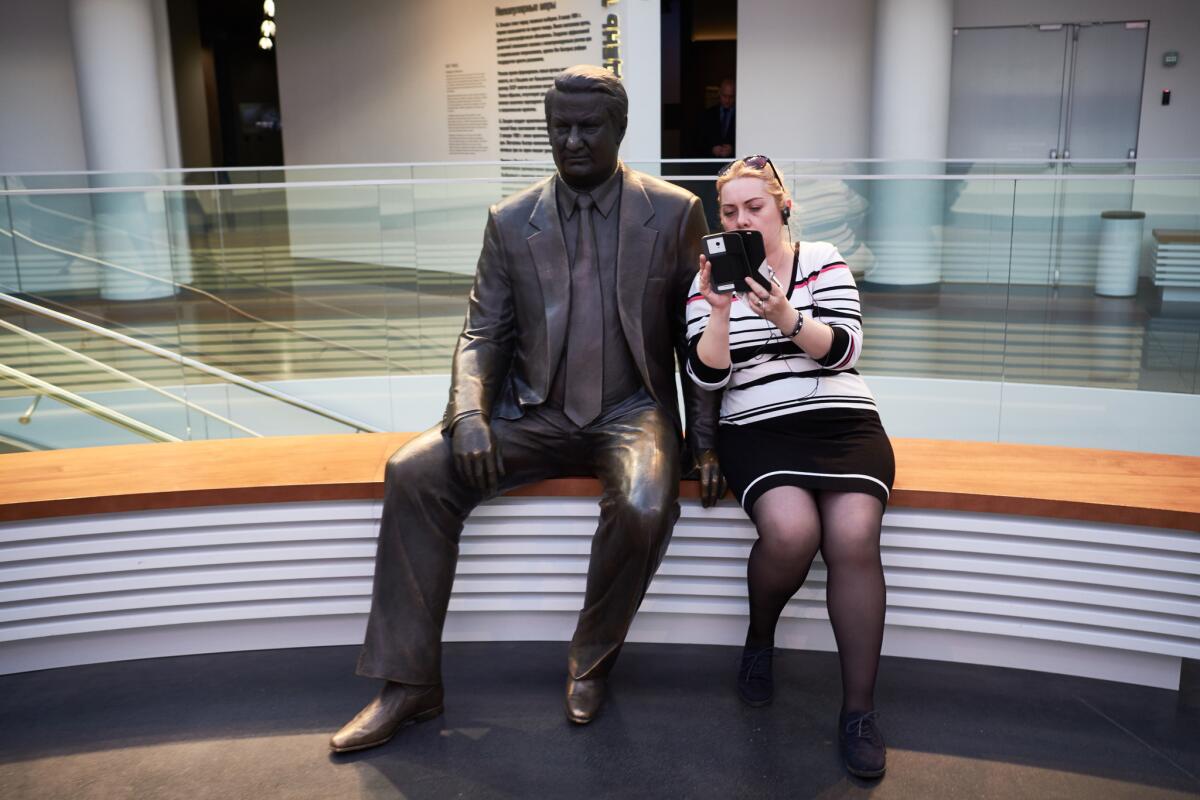
“I perfectly understand their point of view,” Pushmin said. But history is “never a simple black and white picture.”
Andrey Gramolin, 73, a pensioner from Yekaterinburg, said he has taken visiting family and friends to the museum several times since its opening because he appreciates the freedoms that Yeltsin championed.
Many of these freedoms are now under threat as Putin has silenced independent media, jailed political opponents and cracked down on anti-government protests.
“I remember all this as if it was yesterday. But many people have forgotten this, others do not want to remember, the young simply do not know,” Gramolin said. “It’s only outside of the museum that these rights are sometimes difficult to defend.”
This is particularly important for Russians under 30, who don’t realize what the Soviet Union was, and how the new Russia developed in the 1990s, he said.
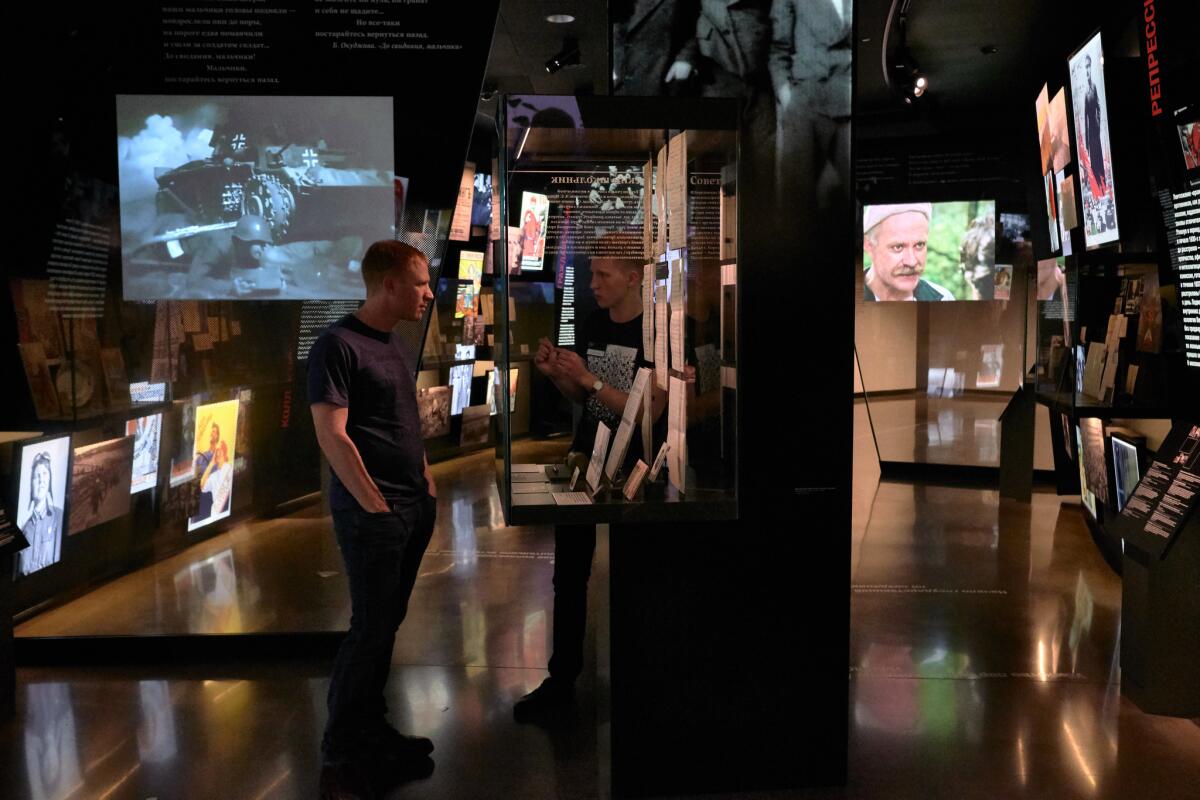
The Yeltsin museum takes visitors through more than 150 multimedia exhibits spread out through seven sections called the Seven Days that Changed Russia. Each room represents a different stage of events, from the final days of the Soviet Union to Yeltsin’s appointment of then-Prime Minister Vladimir Putin as acting president on New Year’s Eve, 1999.
In Day Two, a room dedicated to glasnost, a period in which previously banned music, books and films became available to Soviet citizens, visitors can watch videos of Soviet comedies and television programs. Black and white photos show lines forming at Moscow bookstores, as customers lined up to buy their first copy of titles such as Boris Pasternak’s “Dr. Zhivago.”
At the museum, a line forms to listen to a video of Soviet rock icon Viktor Tsoi sing “We Are Waiting for Change” through headsets.
In the museum’s Day Three room, signs of trouble in the crumbling communist system come alive.
A typical Soviet apartment is reconstructed with a television set looping the ballet “Swan Lake.” The ballet played continuously on state television for three days during the 1991 August coup, when Yeltsin and his supporters went up against hard-line communists trying to derail Gorbachev’s reforms. The general public was kept largely in the dark about the unfolding events in the halls of government.
A phone rings in the corner of the room. Visitors who answer it can listen to a conversation between confused neighbors exchanging rumors about what was happening as their government imploded.
The next room recreates a store with barren shelves to depict the deficit of food and consumer goods in 1991. Meat, butter, sugar, grain, soap and other staples were available only with government-issued coupons, and only by standing in lines. The shop included an abacus, which was used in Russia until the late 1990s, when cash registers became commonplace.
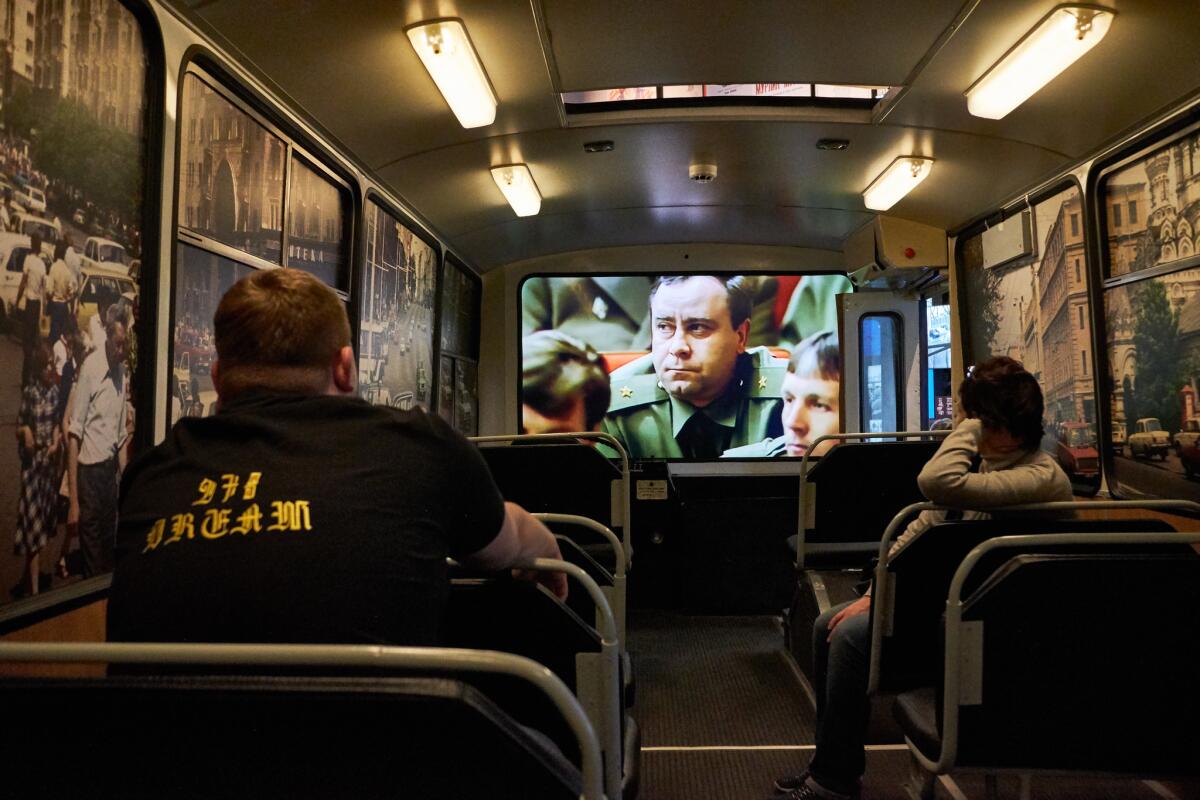
In the last room, the original desk where Yeltsin sat and recorded his farewell address to the nation. Speaking on New Year’s Eve in 1999 with a Christmas tree in the background, Yeltsin handed the power over to Putin. As visitors exit the room, they step into a hallway with a large painting with the word “Freedom” ascending into a blue, cloudy sky.
“In today’s media, of course this time is called nothing less than the “wild ’90s,”and there is little positive being written about them,” said Natalya Maltseva, 38, from the Siberian city of Berezniki. Visiting the museum, Maltseva said she felt the halls’ interactive displays put into order a period she remembered well but hadn’t seen in such a clearly summarized manner.
Her son, who was born at the end of the 1990s, had not been interested in either Yeltsin or the immediate post-Soviet years. After visiting the exhibits with her, “He’s gotten inspired to understand — maybe not the era, but at least his own mother.”
“But there is one important question that the museum does not answer, but it should: How did Russia end up in the wrong place?” she said.
Twitter: @sabraayres
Ayres is a special correspondent.
More to Read
Sign up for Essential California
The most important California stories and recommendations in your inbox every morning.
You may occasionally receive promotional content from the Los Angeles Times.

